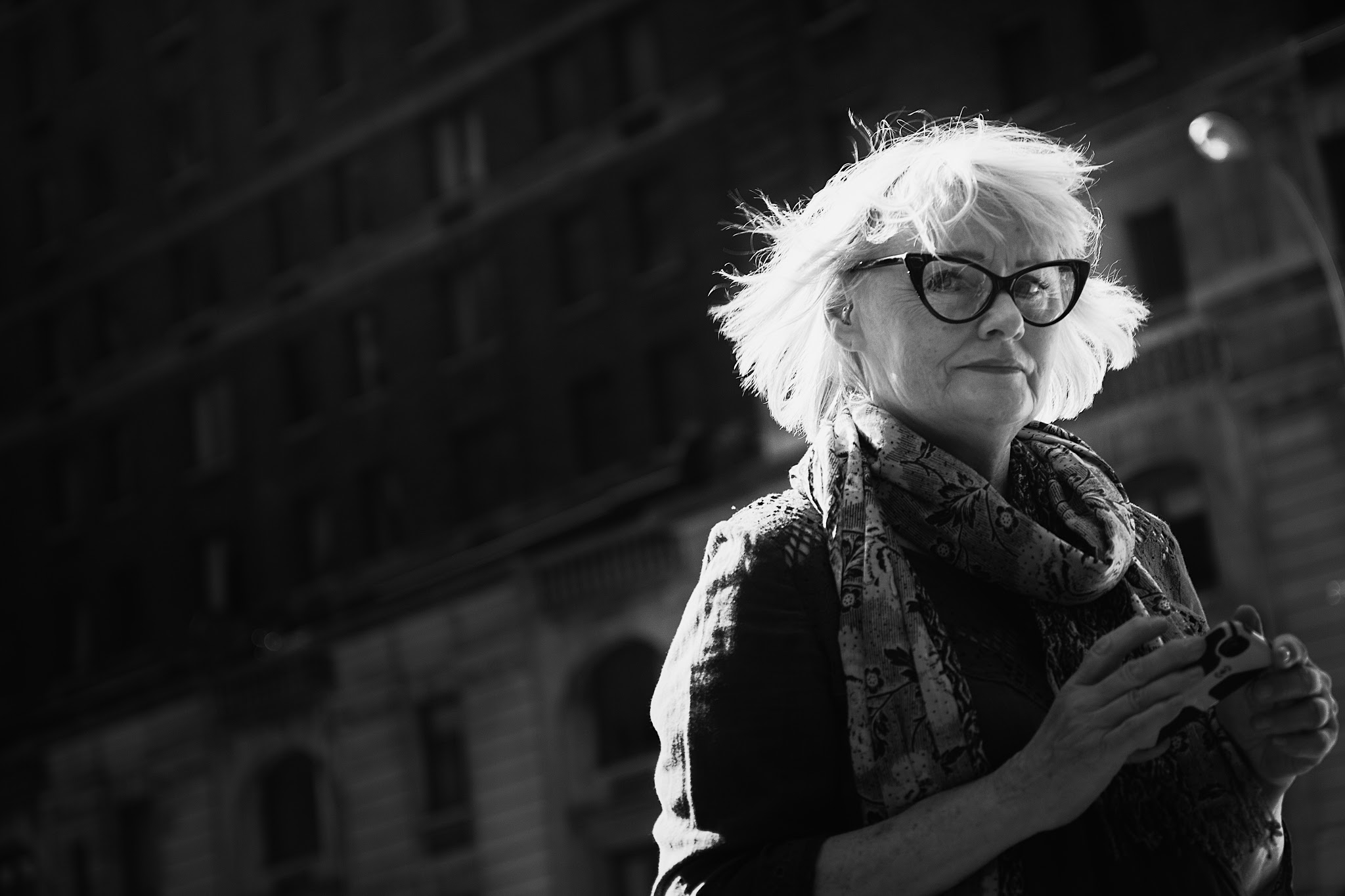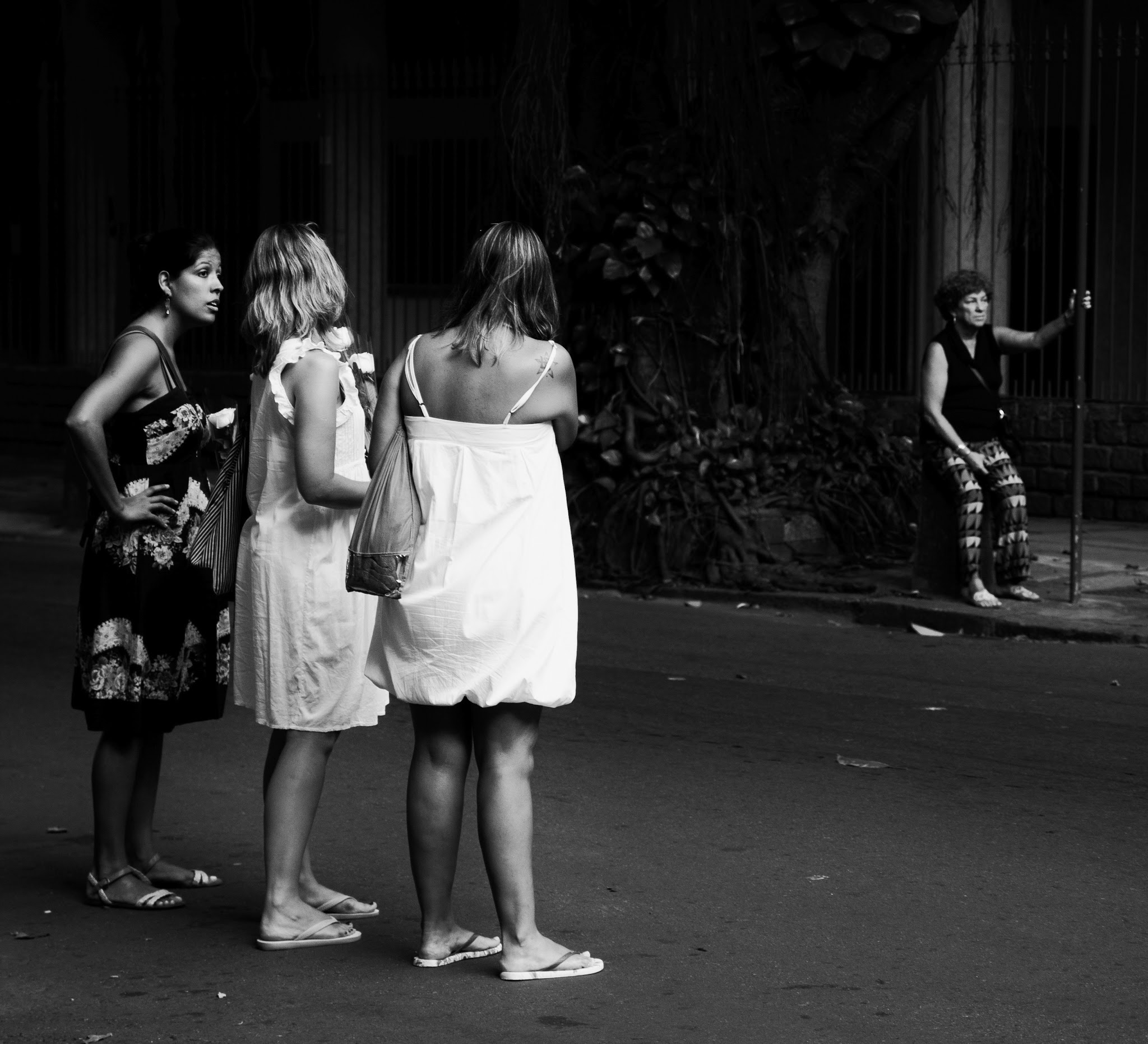Cinema, as an art, has long been paying attention to camera angles. And indeed, the choice of camera angle will have a deep impact on how the viewer will eventually experience the scene and the story. Will they observe at a distance or will they feel part of the action? Will they identify themselves with the subject or will they react to this confrontation?
There are I believe four major types of effects generated by camera angles:
Omniscience: When the camera angle allows for a very objective and neutral point of view, the viewer can distance himself from the scene and become an impartial observer able to “see it all”. Generally speaking, most medium to long-range shots will provide that effect.
Awareness: Some shots establish a direct connection between viewer and subject – the viewer is aware of the subject as a person, with qualities and personality of their own, which can sometimes lead to a psychological confrontation.
Experience: When the line between objectivity and subjectivity is blurred, viewers can sometime experience an astonishing contradiction: they feel as if they are “here” within the scene, yet unnoticed by the subjects – they experience the scene as an invisible observer, in a very voyeuristic manner.
Identification: Finally, certain shots – especially close ups – will yield to a process of identification. The viewer projects its own feelings and emotions on the subject, creating a very personal story based on their own personality and state of mind.
The first two effects: omniscience and awareness are objective point of views, meaning that there is a clear separation between the viewer and the subject, each standing in their own sphere of existence. The last two effects: Experience and Identification are subjective point of views, where the viewer is forced into the scene, eventually associating himself with the story.
John Suler, in his book Image and Psyche, provides an outstanding description of various camera angles and their psychological impact – so I will not describe each type of camera angles at length as you can read more by yourself. Instead, I will focus my analysis on these four major effects, and will provide a few practical examples of camera angles that can be used to create those effects.
There are several types of camera angles to consider moving forward, as explained by John Suler:
Vertical orientation: eye-level, low-level, high-level
Horizontal orientation: front, side, rear, slight deviation on the left or right (POV shots)
Straight vs. tilted orientation
Field of view: long-range, medium range, close range
Effect 1: Omniscience
Behind the idea of omniscience lies the principle of showing the big picture. The viewer is given the opportunity to see the scene in its entirety. Long-range and medium-range shots are best fitted to create that effect. Shots that are at eye level (not higher, not lower) will provide the most objective point of view, while lower / higher shots will create interesting subtleties in the way viewers perceive the overall scene. The key to omniscience is to integrate all meaningful elements into one shot: the subject of course, but also all the surrounding context that will extend the story from that of a man alone, to a man within its environment. In the above image, viewers are shown the entire winter scene, emphasizing the loneliness of the subject. Without the context of the bridge and fog, that feeling of loneliness would be less strong. It is by distancing oneself from the details that we can see the big picture. The lonely figure exists because of the lonely city – both elements resonate and respond to one another to create a more cohesive story.
Straight vs. tilted orientation
Tilted angles – long to medium shots – will largely influence how viewers understand the context around a shot. They can still perceive the overall big picture story, but their perceptions and understandings are altered by the different orientation of the image. Tilted images have this impact on people: they feel disoriented, and as such the context may appear gloomier than it really is. In the above image, a typical Chicago alley will appear scary to viewers. Due to the large angle of view, they can still understand the big picture: a man walking away in a deserted alley. However, the tilt contributes to creating a strange atmosphere, as if something was about to happen to that man. We are close here to the “experience” effect which would have been achieved if the man had been closer to us. As it is, the shot leaves a vague feeling of uneasiness to the viewer, with no clear understanding of why.
Effect 2: Awareness
When I started studying camera angles, I found it difficult to really pin point that awareness effect. I realized that many angles could generate this result, with a lots of interesting variations. However, one element was key to amplify this effect: eye contact. Looking into the eye of someone establishes an instance connection between two people – and this is exactly the same with an image. When someone is looking directly at you, you can sense this person’s independent existence. Once that initial relationship is established, viewers will attribute characteristics to this person based on this person’s expression and attitude – and obviously based on their personal life experiences.
This is where camera angles comes into play: shots creating awareness can be of various focal lengths, as long as the eyes appear to be directed at the camera, and as long as the subject has enough presence to draw most attention. The closer you get from the subject, the stronger the feeling of awareness of this other person will be. Additionally, you can manipulate feelings for that person through changing the vertical orientation of your camera.
At eye-level, you will get a straightforward relationship where viewers and subjects are on the same plane. When taking this type of shots, you establish a simple, direct connection between two human beings. This is a one-on-one relationship, where the viewer is presented with another human being that generates curiosity and interest. The eye connection is very strong and establishes an invisible line that is almost impossible to ignore – as if that person in the image was seeing you as well, was aware of you, just as you are aware of them.
Above eye-level angles will make the subject appears smaller and weaker – as if de-emphasized by the camera. Below eye-level, as it is the case in the picture above, subjects will appear bigger than life, stronger, more imposing – their importance will be emphasized. The characteristics that viewers will attribute to the subjects will depend heavily on the angle you choose – so be aware that camera angles will strongly influence the story being told, no matter what.
Effect 3: Experience
In cinema, many scenes are meant to make the viewer feel at the center of the action. As the camera follows the actors, we are often given the impression that we are moving along with the camera… following their every step. When two characters discuss together, we feel in the middle of their conversation – yet the characters never actually look directly at the camera. While this can lead all the way to identification, most of these tactics will, at least, enable viewers to experience a scene from the inside, not from the outside. And this is where the magic happens in cinema: from being a mere observer, we become an invisible actor: we are forced into the story whether we like or not.
Photographers have a lot to learn from film directors in that matter. But fortunately, we have all the tools at our disposal to make it work. In the above shot, the viewer starts to experience the scene more subjectively. While still being an observer, the viewer is close enough from the main subjects to share their complicity – the side / rear position of the camera is very useful under such circumstances. The subjects do not see us, but we see them, and there’s a clear feeling that we could be discovered at any time, should they decide to look in our direction…
When getting closer to people, we can best create the experience effect by ensuring that the subject is not looking at the camera. For this to happen, choose a side angle or a POV angle (like in above shot). The closer you get from people, the more “voyeuristic” the experience will be, and the more strongly your viewers will experience the scene from the inside – as if they were there, invisible actors of a story that they do not control.
A wide low angle can provide marvelous results as well when it comes to experiencing a scene. Not only does the viewer feels at the center of the action, but the wide angle provides much opportunity to experience this action differently – with some added roughness, as well as more theatrical context – a tactic used by many well-known street photographers in fact.
Effect 4: Identification
This last effect is without a doubt the harder to achieve – and this stems from the unpredictability of your viewers’ reactions. While everyone projects feelings and desires into images, identification itself can only happen under specific psychological conditions.
Let’s first discuss what I mean by identification. Identification can come from identifying oneself with the subject or the story – this is the simplest aspect of this effect. In the picture above, for example, I see myself in this little girl – I understand and relate to her attitude and expression, and she reminds me of myself… in ways that I will not elaborate upon here!
However, there is another factor determining possible identification with a subject or a story. Contrary to what you may think, people identify with a picture when they see something of themselves in the picture, but not necessarily themselves. For example, in the image below, you can identify with the scene because it reminds you of your daughter or grand-daughter. This image resonates with you because of this association – not because you are being reminded of yourself.
How can we achieve or at least facilitate the identification process? From my experience, and my experience only, medium range and close ups are more indicated in achieving that result. More objective angle (e.g., at eye-level) will also probably work better as they will establish a straightforward connection between subject and viewer.
Other than that, there are no clear rules or patterns suggesting one way or another. In fact, identification can occur despite your best efforts: it can be someone looking straight at you that touch something deep in your soul. It can be the lovely neckline of a beautiful woman in a close up shot. It can be the lonely expression of a young person walking alongside a building. It can come from your deepest fear, or your most secret desire. It can take many forms and shapes – and there’s no way to predict when it will occur.
Truth being told, not everything can and should be explained by rules. In photography as well, there is a place for miracles.








